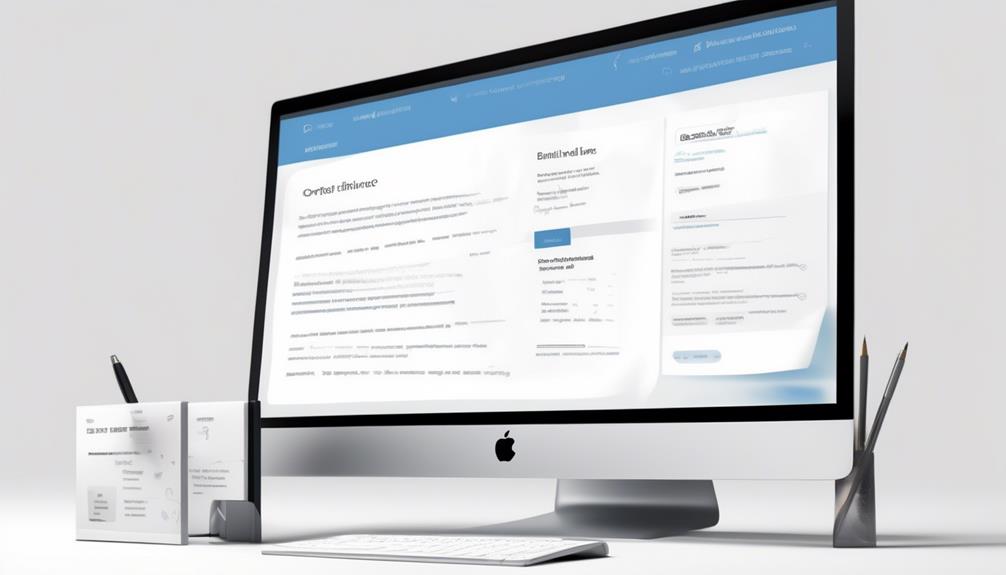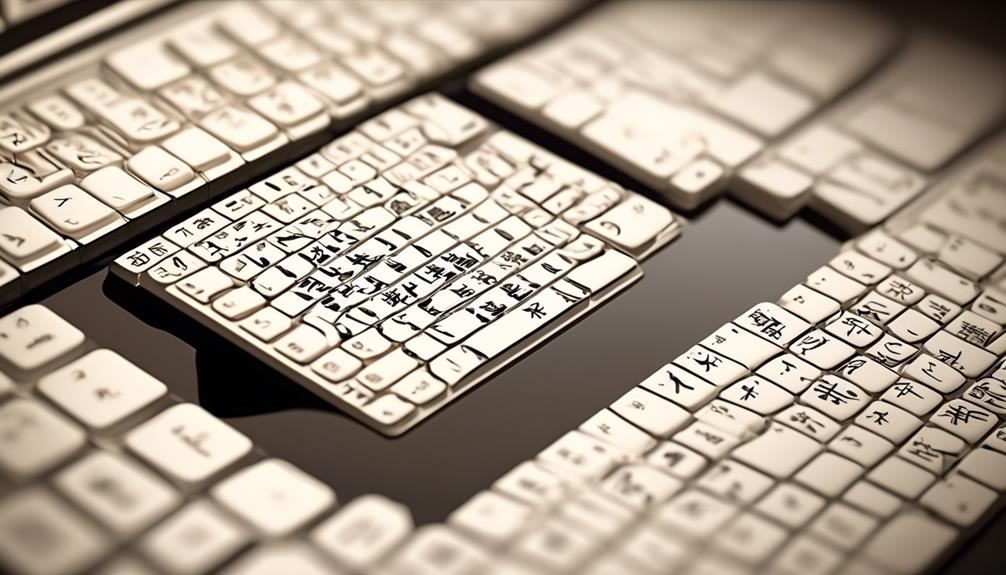As we’ve all discovered, effective email communication is essential in any professional setting.
However, finding the right balance between being concise and thorough can be a challenge. We all want to ensure that our messages are clear, respectful, and get the necessary information across without overwhelming our colleagues.
But how do we strike that balance?
In this discussion, we'll explore some key strategies for crafting impactful emails to staff members that foster clear communication and efficiency within the workplace.
Key Takeaways
- Consider the recipients and send the email to the relevant individuals or departments.
- Maintain a professional tone and avoid using emojis, unprofessional language, or distracting fonts.
- Use a clear and specific subject line to grab attention and indicate the topic of the email.
- Keep the email brief and include only essential information.
Effective Email Communication Strategies
Incorporating effective email communication strategies can significantly improve our ability to convey information and engage with our staff members. When writing professional emails, it's important to consider the recipients and send the message to the relevant individuals or departments. This ensures that the information is directed to the appropriate parties, avoiding unnecessary confusion or delays.
Additionally, maintaining a professional tone is crucial. Emojis, unprofessional language, or distracting fonts should be avoided to uphold a sense of professionalism in our communication.
Another key aspect is using a clear and specific subject line. This is essential as it grabs attention and indicates the topic of the email upfront. It helps the recipients understand the importance and relevance of the email, prompting them to open and read it promptly.
Moreover, keeping the message brief and including only essential information is vital. This ensures that the recipients can quickly grasp the content without feeling overwhelmed by unnecessary details.
Lastly, proofreading and spell-checking all emails before sending them is imperative. This guarantees accuracy and professionalism in our communication.
Crafting Clear and Professional Emails

Crafting clear and professional emails enhances our ability to effectively communicate with staff members, ensuring that our messages are concise, relevant, and impactful. When writing professional emails, it's essential to use a clear and specific subject line that immediately conveys the email's purpose.
Utilizing email templates can streamline the process and maintain consistency in formatting. Introduce the email with a professional greeting, followed by a clear and concise explanation of the purpose. Consider using bulleted or numbered lists to present essential information and action items effectively.
Including an email signature with contact information adds a professional touch and makes it easier for recipients to follow up. Before sending, proofread the email to ensure it's error-free and maintains a professional tone. Additionally, encouraging employee feedback can help refine communication practices.
Sample Email Templates for Various Scenarios
We regularly employ email communication to convey important information and ensure effective collaboration among staff members. When crafting emails, it's essential to make sure that the tone and content are appropriate for the specific scenario.
For instance, when sharing good news, such as a successful project completion or an employee's achievement, a positive and congratulatory tone should be reflected in the email. A sample email template for this scenario could be:
'Hello team,
I'm pleased to let you know that we've successfully completed the project ahead of schedule. Great job, everyone!
Please let me know if you have any questions or need further information.'
On the other hand, when an employee needs to send a formal Sick Leave request, the email should be respectful and include this information:
'Hello [Supervisor's Name],
I'm writing to inform you that I need to take Sick Leave starting from [date] due to [reason]. I'll make sure to complete any pending tasks before my leave.
Let me know if any further documentation is required.
Thank you.'
These email examples demonstrate the importance of tailoring the message to the specific situation and maintaining a professional tone.
Key Elements for Employee Performance Emails

After considering the importance of tailoring email communication to specific scenarios, we can now explore the key elements for effectively conveying employee performance feedback via email.
It's important to keep in mind the recipient's perspective when sending an email about performance. To make it easier for team members to understand and engage with the feedback, be sure to include a clear and specific subject line indicating the purpose of the email.
Additionally, a professional greeting addressing the employee directly sets a respectful tone for the conversation.
When providing performance feedback, it's crucial to be specific, offering tangible examples to illustrate the points being made. Furthermore, actionable steps for improvement should be outlined to guide the employee towards progress.
Closing the email with an open-ended invitation for questions and discussion is essential, as it lets team members know that their input is valued. Encourage them to feel free to ask questions or seek clarification, and assure them that you're happy to help.
Knowing that they can reach out if they need to take the conversation further can foster a more open and constructive dialogue.
Essential Components of Workplace Emails
When composing workplace emails, it's crucial to consider the appropriate method of communication based on the situation and recipients. We make sure to use a professional tone and avoid unprofessional language, emojis, or distracting fonts.
It's important to send a clear and concise message, sharing information within the email service. We might send emails during the next time to address questions or concerns effectively. The purpose of the email should be evident from the subject line and opening paragraph.
It's crucial to include a professional greeting, closing, and signature to maintain a respectful and courteous tone. When crafting workplace emails, we make sure to thoroughly edit and proofread for spelling and grammar errors. Keeping the message brief and including only essential information ensures that recipients can quickly grasp the content.
Frequently Asked Questions
How Do You Write a Formal Email to a Staff?
We write formal emails to staff by maintaining a professional tone and keeping the message brief. We avoid unprofessional language, emojis, or distracting fonts, and thoroughly edit for errors.
The email should include a professional greeting, essential information, and a closing with a signature. We ensure the method of communication is appropriate for the situation and strive for clarity and professionalism in our writing.
How Do You Write an Email to a Group of Employees?
Alright, so here's how we approach emailing a group of employees:
- Keep it clear, concise, and professional.
- Use a subject line that grabs attention and clearly states the purpose.
- Start with a professional greeting, then get straight to the point.
- Avoid unnecessary information and keep the tone respectful.
- End with a professional closing and signature.
How Do You Write a Letter to Staff Members?
We write a letter to staff members by ensuring a professional tone, clear subject line, and brief yet inclusive content.
We maintain a clear and specific subject line and avoid unprofessional language, emojis, or distracting fonts.
Thorough editing and proofreading for spelling and grammar errors is essential.
Our communication method depends on the situation at hand, ensuring the message is appropriate and effective for the intended audience.
How Do You Address a Staff Member in an Email?
When addressing a staff member in an email, we always prioritize professionalism. It's essential to use appropriate formal salutations, considering the recipient's seniority and position. Using the recipient's title and last name is crucial unless instructed otherwise.
We steer clear of casual or informal language to maintain a level of respect and professionalism. When in doubt, we lean towards formality, ensuring our communication reflects the professional standards of the workplace.
Conclusion
In conclusion, effective email communication is crucial for maintaining a professional and efficient workplace.
By crafting clear, concise, and professional emails, we can ensure that our staff members receive the information they need in a timely manner.
Are you ready to take your email communication to the next level and create a seamless flow of information in the workplace?










